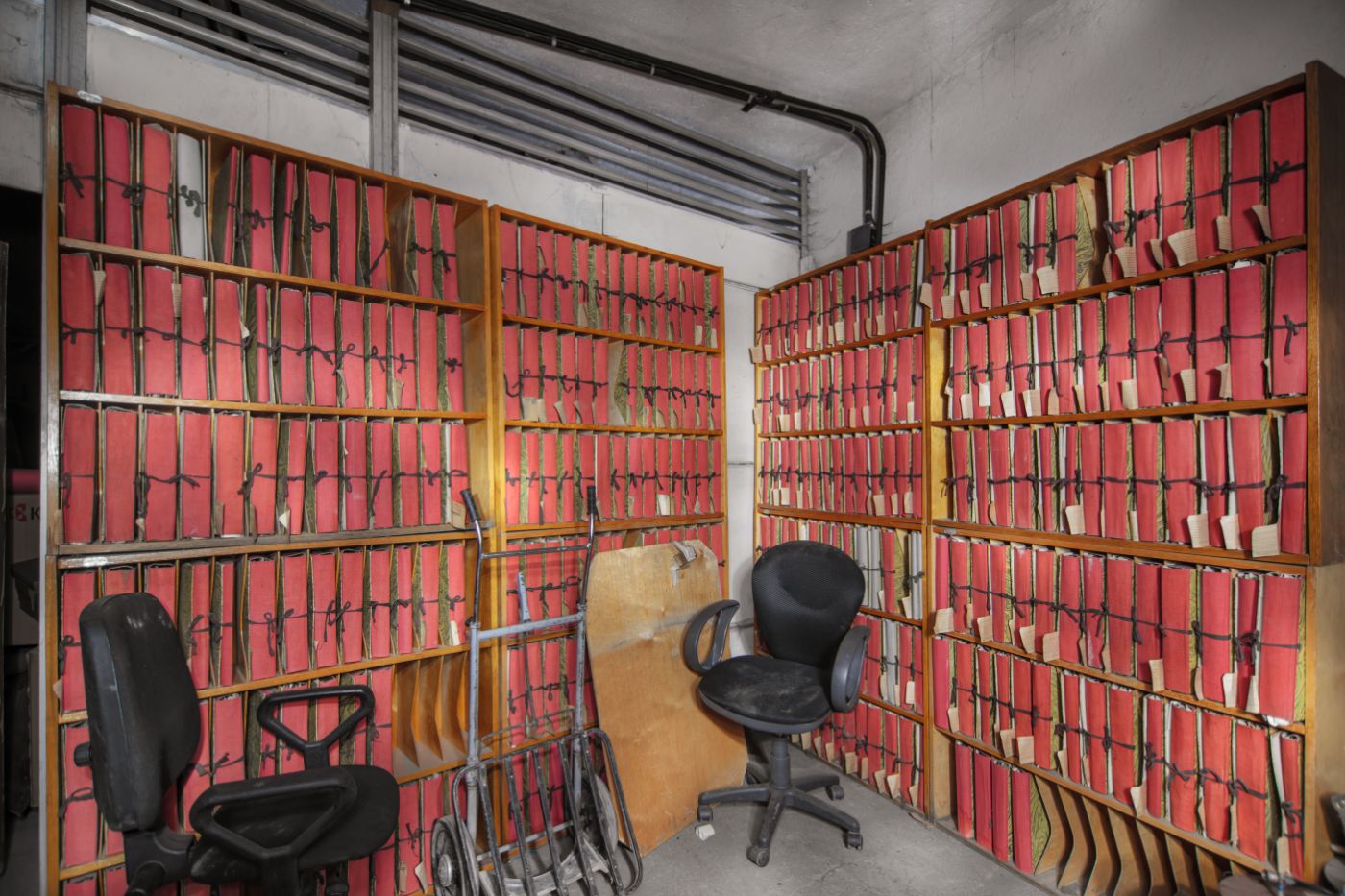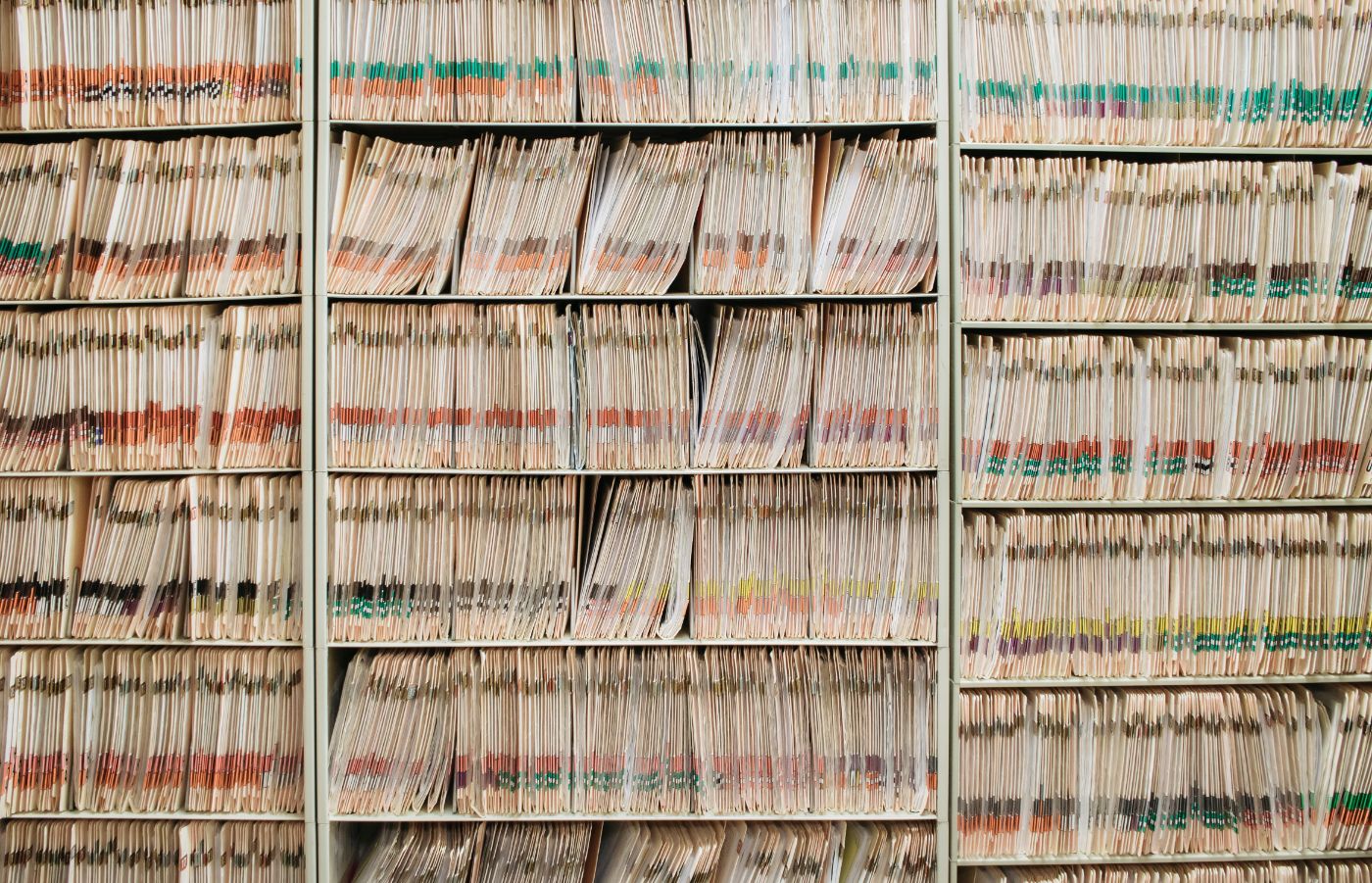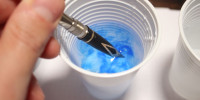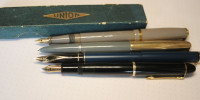How To Store & Preserve Notebooks So They'll Last Forever

If you journal a lot, or take notes that would be valuable to others in the future, you might want to take extra precautions to ensure their longevity.
The best way to preserve your notes is to store them in a cool, dark, and dry place. Low humidity and temperature are the most important factors to ensure archive longevity. You want to use acid-free, high-quality paper, and pH-neutral permanent ink, sometimes called document or archival ink.
But even if you use regular stationary and a ball point pen, just keeping the humidity down and limiting the exposure to sunlight will go a long way.
When I started to think about this problem, I was mainly thinking of what ink to use. I tested several permanent inks and stayed away from anything exotic. However, ink is the last of your concerns, I found out. If you forget to address the first two concerns, it doesn't matter what ink you use — your archive will be destroyed.
This article is largely inspired by an answer Brian Goulet gave on the Goulet Pencast, and I set out to develop his answer here. You can check the original video here.
Your Priorities When Archiving Notes for the Long Run
Your priorities may not be what you initially think they'd be. Here are the most pressing concerns to address, in order of importance:
- Storage
- Paper quality
- Ink
Storage conditions are the most important
Your main priority are the storage conditions of your archive. Humidity and sun/heat are the quickest to destroy your archive. Ideally, you store your notebooks in a cool, dry location, away from sunlight.
Preventing water and fire damage
There are two great ways to prevent fire and water damage. The first is to digitize your archives. Having a digital backup is great, although digital files aren't as lasting as the physical thing, ironically. Medium formats change, files get corrupted, and carriers like CD's and USB sticks will degrade and corrupt over time. So it's a good backup in case of physical damage to your archives, but it isn't a great way to preserve over generations.
The best way to prevent water and fire damage to your physical archives is storing your archives inside a safe. There are safes available that protect against house fires for 30, 60, and 90 minutes, which should be plenty of time for the emergency services (or ideally yourself) to put out the fire.
To prevent water damage, you'd ideally wrap your notebooks in zip lock bags, although those might melt with a serious fire, after which your notebooks could be damaged by water from the fire departments intervention.

Vacuum sealing solves multiple problems
By vacuum sealing your notebooks, you solve all humidity and water issues immediately. In fact, simply vacuum sealing using cheap ready-to-use vacuum bags and then storing those sealed notebooks in boxes in the attic will be a great way to ensure the durability of your archives.
You could throw in a small moisture absorber, which I collect from electronics and medicine packaging. This will ensure any trapped moisture will be collected.
You want to use acid free paper
Paper is mostly made from wood pulp, which contains lignin, which will turn pages yellow and brittle and will deteriorate over time. The goal is to have a pH-neutral paper. Acid-free paper addresses this issue by removing the lignin through chemically processing the pulp. This paper will last a lot longer and won't disintegrate, if stored properly. Most quality (fountain) pen papers are acid-free and will last a lifetime.
The reason paper choice tops ink selection, is that your ink is as good as your paper. The paper carries the ink, and if it deteriorates, even the best archival inks won't matter.
Here are the papers I use, tested, and recommend.

Ink is the least important, though still critical
As with paper, ideally we want to choose an ink that is pH-neutral or slightly basic.
Acidic inks will eat away the paper, slowly at first, then all of a sudden quickly. Literally miles of the Dutch colonial archives are already disintegrating due to the acidic, instable iron-gall inks that have been used. The East India Companies archives are in better shape, simply because they standardized their archival ink, ensuring its stability and prohibiting any self-made recipes (which would've been common at the time).
There are many inks that are considered perfectly safe that are actually really acidic, for example Pelikan 4001 Blue-black. They are no good for archival purposes. I have created an extensive list of pH-values of different inks, which you can find here.
I opt for a stable, pH-neutral or basic, permanent high contrast ink. This will ensure longevity over centuries. pH-neutral ink won't affect the paper; the high contrast will remain longer legible, even after fading; and the permanent characteristics will ensure the ink will remain as is for decades.
I typically use Noodler's Black (check at Amazon), which is bulletproof, eternal, waterproof, and slightly basic (8.6 pH).
Here are the archival inks I use and recommend.
Location in the house
The location in your house or office also matters, especially at which floor you keep your archives. Avoid the basement: they are prone to flooding. Higher floors get hotter with fires.
The ideal location in the house is your second floor in a fireproof safe, or the first floor, somewhere higher up, so your notes are out of the way of minor floods.
I use a file cabinet to store my notes efficiently.

The Ultimate Inter-Generational Archiving Solution
If we combine all of this knowledge, the ultimate storage solution would look like this:
- Our main archive is stored in fireproof safe (90-minutes barrier), inside a climate controlled room, which will be kept cool and dry at all times.
- Inside the safe, we store our notebooks inside vacuum sealed bags.
- The notebooks use acid-free, medium to heavy-weight paper.
- We use pH-neutral, high-contrast archival or document ink.
- Each notebook has been digitized and is stored in both the cloud and on data carriers off-site.
Put It In Perspective: It Will Last Either Way
While this may be a fun project to set up, it might not be neccessary to ensure your notes will outlive you.
In the comment section of the podcast by the Goulet Pen Company, a librarian chipped in. The librarian runs a digitization project, where they digitize notes of people who had no idea their notebooks would one day be archived, and had taken no precautions whatsoever. Their notes were written in pencil and thrown into a box in the attic.
Even then, their notes outlasted them decades or centuries. So even if you make no attempt at storing your notes for the long run, they may well end up on libraries servers around the world.

Did you find the answer to your specific question?
👍 59 👎 3




Leave a comment